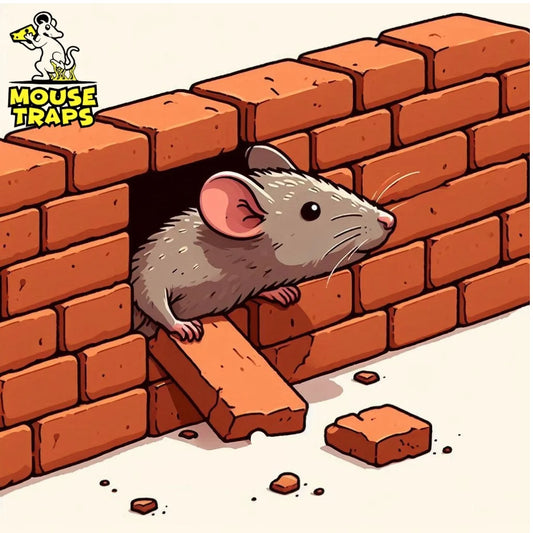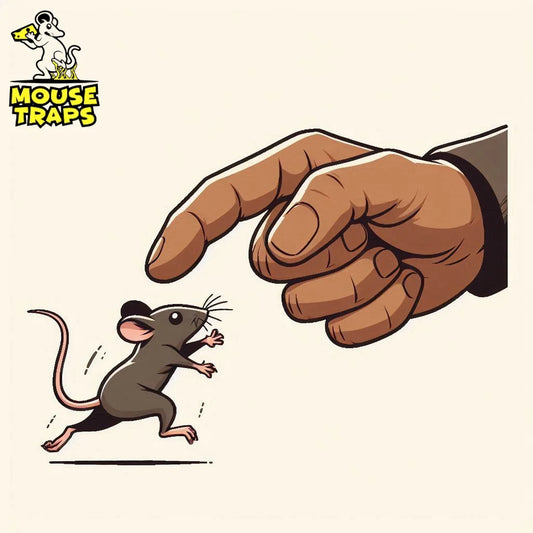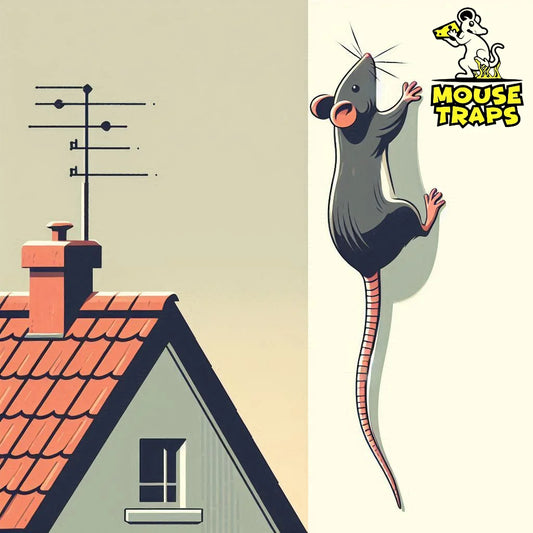Introduction:
Rats are unwelcome guests in any home, but they can be particularly problematic when they take up residence in outdoor storage sheds or garages. Rats aren't a nuisance that damages property and spreads diseases they can also be tough to get rid of once they make themselves at home. Luckily there are ways to make your outdoor storage spaces less inviting to rats and stop infestations before they start. This detailed guide will delve into ten tactics for keeping rats from your shed or garage.
Seal Entry Points:
- Inspect entry points thoroughly by getting down to ground level and looking for even the smallest openings. Rats can squeeze through holes as small as a quarter.
- Pay close attention to areas where utility lines enter the building, as rats can exploit gaps around these penetrations.
- Use caulking or expanding foam in addition to steel wool or wire mesh to seal gaps effectively. Ensure that materials are securely anchored and cannot be easily dislodged by rats.
- Check for gaps along the bottom of doors and walls, as rats can dig or burrow beneath structures to gain access.

Keep the Area Clean:
- Consider installing shelves or cabinets to keep items off the floor and make cleaning easier.
- Regularly inspect stored items for signs of damage or infestation, especially if you suspect rat activity in the area.
- Keep trash cans tightly sealed and away from the shed or garage to avoid attracting rats.
- If you use the space for hobbies or projects, clean up any spills or debris immediately after use to minimize odors and prevent attracting rodents.

Store Food Properly:
- Store pet food and birdseed indoors whenever possible, especially during the night when rats are most active.
- Clean up spilled food promptly, and consider using shallow trays or dishes to contain messes.
- If you must store food in the shed or garage, choose containers with smooth, seamless interiors that are difficult for rats to climb or grip.

Regular Maintenance:
- Check the roof and eaves for signs of damage or deterioration that could create entry points for rats. Repair any missing shingles, gaps, or holes promptly.
- Trim back trees or bushes that overhang or touch the roof of the shed or garage, as rats can use these as pathways to access the building.
- Inspect the foundation for cracks or gaps that could allow rats to burrow underneath the structure. Fill in any openings with concrete or hardware cloth to prevent access.

Use Rodent-Proof Containers:
- Choose containers with secure locking mechanisms or heavy lids to prevent rats from accessing stored items.
- Consider using metal bins or containers with smooth, seamless interiors that rats cannot chew through.
- Label containers clearly and organize stored items to make it easier to locate items without disturbing the contents unnecessarily.

Install Lighting:
- Position lighting fixtures strategically to eliminate dark corners and shadowy areas where rats may feel safe nesting.
- You might want to think about setting up lights that turn on when they sense motion or using timers to save energy while ensuring you have light when necessary.
- Make sure to use outdoor rated lighting fixtures and bulbs to guarantee they can withstand weather conditions for a time.

Consider Natural Predators:
- Explore the wildlife and their habitat needs to figure out which predators would work best in your region.
- Make sure to include elements, in the environment like stacks of brush, birdhouses or resting spots to draw in and assist hunters such, as owls, hawks and snakes.
- You might want to think about reaching out to a pest control service that focuses on using eco sustainable approaches, for managing rodents.

Regular Inspection:
- Keep a log or journal of your inspections, noting any signs of rodent activity, changes in behavior, or environmental conditions that could affect rat populations.
- Involve other members of your household or community in the inspection process to increase awareness and promote proactive pest management practices.
- It might be an idea to think about bringing in a pest control expert, for regular check ups and pest control services especially if you've had ongoing problems, with rats invading your space before.

Use Traps:
- Experiment with different types of baits to determine what attracts rats in your area. Peanut butter, nuts, seeds, and dried fruits are popular choices.
- Place traps along walls and near entry points, as rats tend to travel along established pathways.
- Monitor traps regularly and dispose of captured rats promptly to prevent odors and potential contamination.
These traps usually include a space, with a mechanism that shuts the door when the rodent goes inside. They are commonly crafted from materials such as metal or strong plastic. Are available, in different sizes to suit various kinds of rodents.
Live Humane Traps:
Live humane traps are designed to capture rodents without harming them, allowing you to release them back into the wild unharmed. These traps usually include a space, with a mechanism that shuts the door when the rodent goes inside. They are commonly crafted from materials such as metal or strong plastic. Are available, in different sizes to suit various kinds of rodents.

Benefits:
- Ethical Treatment: Live humane traps offer a humane and ethical way to deal with rodent infestations without causing harm or suffering to the animals.
- Non-Toxic: Unlike chemical baits or poisons, live traps do not use any harmful substances, making them safe for use in homes with children or pets.
- Reusable: Live humane traps can be reused multiple times, making them a cost-effective and environmentally friendly solution to rodent control.
- Easy to Use: Live traps are simple to set up and require minimal maintenance. Once a rodent is captured, it can be safely released outdoors away from the home.
- Effective: When used correctly, live humane traps can be highly effective at capturing rodents, including mice, rats, and squirrels, without the risk of injury or contamination.
Sticky Glue Mouse Pads:
Sticky glue mouse pads, also known as glue traps or glue boards, are flat cardboard or plastic sheets coated with a sticky adhesive. When a rodent walks onto the pad, it becomes stuck to the adhesive, immobilizing the animal.

Benefits:
- Easy to Use: Sticky glue mouse pads are simple to set up and require no baiting or additional maintenance. They can be placed in areas where rodents are known to frequent, such as along walls or near entry points.
- Non-Toxic: Glue traps do not contain any toxic chemicals or poisons, making them safe for use in homes with children or pets.
- Cost-Effective: Glue traps are relatively inexpensive and can be purchased in bulk for ongoing rodent control.
- Versatile: Glue traps are effective for capturing a variety of rodents, including mice, rats, and insects like cockroaches and spiders.
- Disposable: Once a rodent is captured, the entire glue trap can be disposed of in the trash, making cleanup quick and easy.




